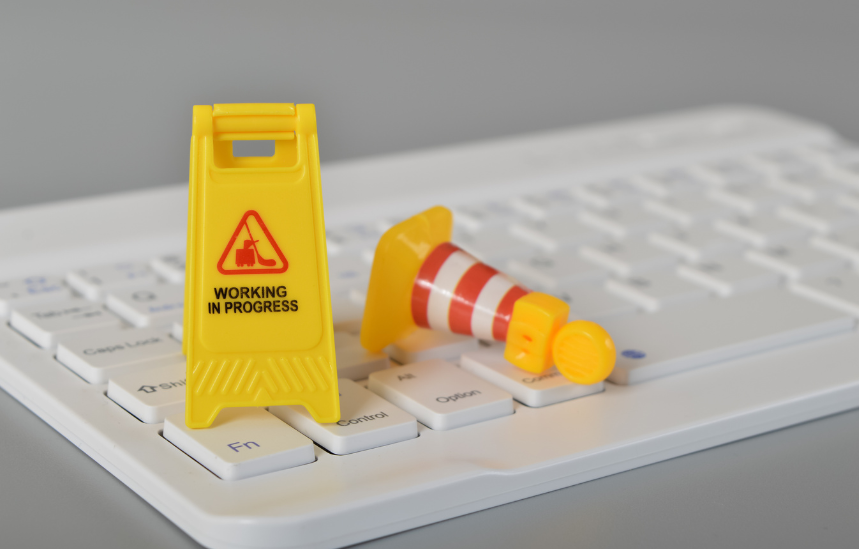How Do I Maintain My Website After It Is Designed?
Congratulations! Your website is live, and it looks fantastic. But the work doesn’t stop there. To ensure your website remains functional, secure, and effective, ongoing maintenance is essential.
Whether you’re running a small business website, an e-commerce store, or a personal blog, maintaining your site is key to its long-term success. In this guide, we’ll walk you through the steps to keep your website in top shape.
Why Is Website Maintenance Important?
Before diving into the how, let’s talk about why website maintenance matters. Keeping your site updated and secure is crucial for several reasons:
- Security – Protects your site from hackers, malware, and data breaches.
- Performance – Ensures fast loading speeds and smooth functionality.
- User Experience – Keeps your site easy to navigate and visually appealing.
- SEO Rankings – Helps improve search engine visibility.
- Compatibility – Ensures your site works well across all devices and browsers.
Neglecting maintenance can lead to downtime, lost revenue, and a damaged reputation. Now, let’s explore how to maintain your website effectively.
Step-by-Step Guide to Website Maintenance
1. Regularly Update Your Content
Fresh, relevant content keeps your audience engaged and improves SEO.
- Publish new blog posts regularly.
- Update product listings with new descriptions and images.
- Share company news, updates, and promotions to keep your audience informed.
2. Keep Your Software and Plugins Up-to-Date
If your website is built on a CMS like WordPress, updates are essential.
- Always update your CMS to the latest version.
- Regularly update plugins to ensure security and compatibility.
3. Monitor Website Security
Security should always be a top priority.
- Ensure your SSL certificate is up-to-date.
- Use firewalls and malware scanners to detect threats.
- Set strong, unique passwords for your CMS and hosting.
4. Perform Regular Backups
Backups protect your site in case of data loss.
- Set up automated backups to run regularly.
- Perform manual backups before major site updates.
- Store backups in multiple locations (cloud storage, external drives).
5. Optimize Website Performance
A fast website improves user experience and SEO rankings.
- Run speed tests using Google PageSpeed Insights.
- Compress images to reduce load time.
- Use caching plugins to enhance speed.
6. Check for Broken Links and Errors
Broken links harm user experience and SEO.
- Use broken link checkers to find and fix issues.
- Monitor for 404 errors using Google Search Console.
7. Review and Update SEO Strategies
SEO is an ongoing process that requires attention.
- Conduct regular keyword research to stay competitive.
- Update meta titles and descriptions for better visibility.
- Optimize content with proper headings, alt text, and internal links.
8. Monitor Analytics and User Behavior
Understanding user behavior helps you improve your site.
- Use Google Analytics to track traffic and conversions.
- Implement heatmaps to see how users interact with your site.
- Collect user feedback to identify problem areas.
9. Ensure Mobile Compatibility
Most users browse websites on mobile devices.
- Maintain a responsive design that adjusts to all screens.
- Test your site on different devices and browsers regularly.
10. Plan for Regular Audits and Reviews
Regular audits help identify and fix potential issues.
- Conduct technical audits to check for speed, security, and broken links.
- Perform content audits to ensure relevance and accuracy.
- Review your website design to keep it modern and user-friendly.
DIY vs. Professional Maintenance: Which Is Better?
DIY Maintenance
✅ Cost-effective
✅ Full control over updates
❌ Time-consuming
❌ Requires technical knowledge
Professional Maintenance
✅ Saves time
✅ Provides expert support
❌ Can be expensive
For most businesses, a mix of both is ideal. Handle simple updates in-house and outsource complex issues to professionals.
More elaboration here!
Frequently Asked Questions (FAQs)
1. How often should I maintain my website?
- Perform regular maintenance monthly, with security checks and backups weekly.
2. Can I skip website maintenance to save money?
- No. Ignoring maintenance can lead to security vulnerabilities, slow performance, and costly repairs.
3. What’s included in a website maintenance package?
- Updates, backups, security scans, and technical support. Some plans also include content updates and SEO services.
4. How much does it cost to maintain a WordPress website?
- Costs range depending on site complexity. Contact us for exact pricing
Keep your website in top shape
Maintaining your website is essential for long-term success. By updating content, securing your site, optimizing performance, and monitoring analytics, you can keep your site running smoothly.
Whether you handle maintenance yourself or hire professionals, staying proactive is key. A well-maintained website protects your business, improves SEO, enhances user experience, and drives growth.
Ready to take control of your website maintenance? Start by creating a plan today!


